The Basics of Blogging Search Optimization
Google routes about 90% of searches in Canada, which is huge. As the world of search engine optimization (SEO) continues to evolve, so do the best practices for ranking in Google searches.
If you’re a business that relies on customers in Canada in different locations or your business caters to a city or town, it’s important to stay ahead of the curve and focus on local SEO in Canada.
In this article, we’ll explore some of the top local SEO tips and tricks for businesses in Canada. By following these tips, you’ll be well on your way to boosting your ranking in local search results, getting more clicks and visitors to your website, and generating more leads and sales.
What is local SEO?
Local SEO is one of the types of search engine optimization used to optimize your online presence for local; search results in a particular geography. This includes optimizing your website, Google Business Profile, social media profiles, and blog posts for local keywords. It also involves claiming and optimizing local business listings on directories like Google My Business and Yelp.
Local SEO is important for any business anywhere, whether it is in Canada or any other particular location that wants to be visible to local customers. Optimizing your online presence for local keywords can improve your chances of being found by potential customers searching for businesses like yours.


How Canada is different from other markets from the local SEO point of view and challenges
When it comes to SEO, Canada is a unique market. The country has two official languages (English and French) and a diverse population. As a result, attempting to rank in Canadian search engines presents some unique challenges.
One of the biggest challenges is creating content relevant to both English and French speakers. This can be difficult, as you must ensure that your content is interesting and informative for both groups. You also need to ensure that your website is accessible in both languages.
Canadian businesses also have to contend with the fact that Canadian search engines differ from those in other countries. Google Canada, for example, uses different algorithms than Google in other countries. This can make it difficult to rank highly in Canadian search results.
Another challenge that comes with SEO in Canada is the competition. Due to the large population and size, many businesses are vying for attention in the Canadian market. This can make it difficult to stand out from the crowd and get your website noticed by potential customers.
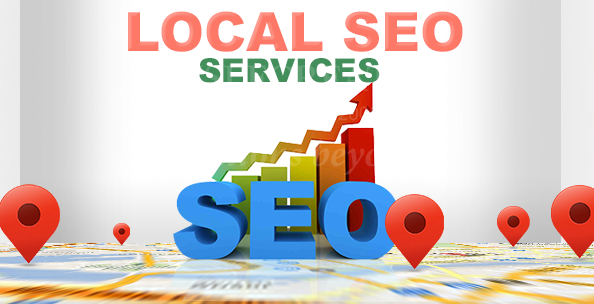
What are the main benefits of local SEO for businesses in Canada?
When you opt for local search engine optimization, there are several benefits:
- Higher ranking on Google map listings: Your local clients will be able to see your company name in the local search results; therefore, you will be able to capture the maximum local market share.
- Conversion through long-tail keywords: Maximum keywords in the local search engine optimization are of long-tail nature. Such keywords have lower competition and a higher chance of conversions, such as “best carpenters in Toronto,”: “Affordable dentist Alberta, etc.
- Brand building in local searches: Via local SEO strategies you can expect your brand image to get a boost if your strategies are right. You can promote your events, discounts, and promotions through your GBP (Google Business Profile), landing pages, and social media channels.
- Boost SEO for multiple cities: By creating individual city pages you can gain transactions for your company on local levels for multiple locations. It is an excellent strategy when you have multiple offices of your business scattered across a vast country like Canada.
- Save on marketing costs: If you are successful with your local search engine optimization campaign, you can expect your overall marketing budget to go down since you will be earning an adequate number of leads and conversions through your campaign.
Strategies to boost your local SEO in Canada
The following strategies will help you in your endeavor to get maximum clients from your targeted geographical location:
- Claim your Google My Business listing
One way to make sure you’re visible online is to create a listing for your business on Google My Business (GMB) or GBP (Google Business Profile). Remember that both GMB and GBP are the same. It refers to a free listing service from Google that allows businesses to appear in local search results for a particular geographical location, such as a city or town.
If you happen to be a business in Canada looking to get maximum local customers, claiming and optimizing your GMB listing is something you can’t without. GMB listing results appear in Google Maps results, displaying company location, name, business description, address, contact number, and Google ratings and reviews.
To optimize your GMB, you can do the following:
- Make sure your GBP listing is active and up to date in terms of name., address contact number description, and location
- Use strong, keyword-rich titles and engaging descriptions
- Use high-quality images and videos in them
- Promote your GBP listing through social media and other channels
- To get the most out of your listing on the GBP, ensure you have the maximum number of reviews.
- Get your business listed in as many online directories catering Canada as possible
If you want your business to be found online, it’s important to make sure you’re listed in as many online directories as possible. This is especially true for local businesses, as directories are one of the main ways people find businesses in their area. Some of the most prominent directories are Yellow Pages, Yelp, and Clutch etc.
There are several online directories in Canada, so it can be a bit overwhelming to try and list your business in all of them. However, we’ve compiled a list of the most important directories for local businesses, so you can get started on getting your business listed and boost your online visibility.
- Encourage customers to leave reviews.
Having maximum positive ratings and Google reviews is super important for your GMB listings. Moreover, if possible earn as many reviews on local directories too. The following practices will help you with reviews:
- make sure you have a strong review management strategy in place. This means watchover your business performance in terms of reviews and responding to all reviews, both positive and negative regularly..
- Businesses in Canada practicing local search optimization can offer incentives for customers to leave reviews. This could be a discount or voucher for their next purchase.
- Make it easy for customers to leave reviews by providing a link on your website or email signature.
- Optimize your website content for local keywords
It’s vital to optimize your website content for local keywords to ensure potential customers are finding you in your area. Local SEO is different from traditional SEO because it’s focused on optimizing your online presence for customers in a specific geographic area.
There are a few key ways to optimize your website content for local keywords, including
- Doing research on which people in your area are searching keywords
- Don’t forget to mention your city and state name in your website content
- Creating location-specific pages on your website
- Ensuring your website is listed on local directories and map services
By following these tips, you can ensure potential customers are finding your website in your area who are looking for the products or services you offer.
- Use High-Quality Content
Businesses should also focus on creating high-quality content that is relevant and useful to their target audience. This includes optimizing for long-tail keywords, as well as creating content that is informative, engaging, and shareable. You can focus on these tips for GBP descriptions, website content, and off-page content development.
- Don’t Neglect your website performance
Improving the technical side of your website’s performance is another important factor. Users don’t like to stay on slow websites, and they hate sites with poor UX. So, ensure that they track their website analytics to understand how their website is performing. This will help them identify any areas that need improvement and make the necessary changes to optimize their website for local search engine optimization in Canada.
Common SEO mistakes to avoid
Avoid common SEO mistakes, including keyword stuffing, using irrelevant keywords, and over-optimizing. Furthermore, businesses should avoid using duplicate content, which can hurt their SEO efforts.
Businesses should also avoid using automated tools to optimize their website, which can lead to poor-quality content and decrease website rankings. Furthermore, businesses should avoid over-optimizing, as this can lead to penalties from search engines.
Moreover, businesses looking to get the most out of their local SEO based in any Canadian city should also avoid using link-building techniques that are considered “black hat.” This includes buying links, participating in link schemes, and link-spamming.
Conclusion
SEO is essential for businesses wanting to succeed in the digital age. This guide has provided an overview of local SEO in Canada and discussed the unique factors that make it unique and challenging. It also provides some tips on optimizing local search engine optimization in Canada and outlined common mistakes to avoid.
By understanding the fundamentals of discussed information, businesses in Canada can create a comprehensive and well-thought-out SEO strategy that will help them to reach out to their target audience, increase their website traffic, and boost their online presence.
How to Use Infographics on Websites Effectively to Attract Maximum Traffic
In the world of cutthroat competition, online businesses look to do everything to make your website surge ahead in the competition. Neglecting website design is one of the most common mistakes small businesses make.
Your website is often the first interaction potential customers have with your brand, so making a good impression is paramount. Various Studies show that more than 90% of site visitors’ fees are affected by the design of a site. Moreover. Over 35% of people will stop engaging with a site if its content/layout is unattractive.
So, how do you make it trendy and attractive, and how to use infographics on websites? This blog will shed light on it comprehensively. Let’s begin.
Let's Look at What an Infographic is And Why it is Important?

An infographic visually represents information, data, or knowledge and is a great way to convey complex ideas quickly and easily while making your website more appealing.
They are created to present information in a way that is both visually appealing and easy to understand for onlookers. They are often used on websites, social media, and communication mediums to communicate complex data or topics in a more digestible format.
In a nutshell, infographics on websites serve a variety of purposes, such as:
– Increasing website traffic
-Generating leads and sales
– Boosting SEO
– Enhancing brand awareness
The above points show infographics can be very helpful in increasing the traffic and time people dwell on your website.
When users find an infographic that makes them understand complex information visually, they like the page. With increasing clicks, the site’s web page signals to Google that it is worthy of getting a higher rank, so the ranking shoots up, and traffic increases too.
Another way they help SEO is that they often contain keywords and phrases that can help improve your rankings in search engines. Moreover, infographics are one of the best ways to establish yourself as an authority in your industry or niched. They can help show potential customers and clients that you know what you’re talking about and make an instant impression.
Steps to Create Engaging Infographics

We have discussed that creating and using infographics is a great way to add interest and visual appeal to your web page; you can present data, create visual stories, or add visual interest to your site. No matter how you use them, be sure to choose an infographic design that is visually appealing and easy to understand.
Creating an infographic is all about organizing the visuals around the data. Here’s a quick overview of how to create an infographic:
- Choose a topic.
- Do your research, and gather and organize your data.
- Finding the right design for your infographic and Customize your infographic
- Start with a headline and brief introduction (optional).
- Add in all of your graphics and text, grouped into categories.
- Include a CTA at the bottom, asking viewers to take action (such as signing up for your email newsletter or viewing another page on your site).
- Embed your infographic onto your website or blog.
- Publish your infographic.
- Share your infographic on social media using social sharing buttons.
By following these steps, you’ll be able to create an engaging and informative infographic that will reach a wide audience.
How to Create a Winning Design to Create Impactful Infographics
Design is a critical part of creating an infographic. The right design will help your infographic stand out, communicate your message clearly, and leave a lasting impression on your audience.
There are a few things to keep in mind when you’re designing your infographic.
- Don’t make it complex: When it comes to infographics, less is always more. Offering too much information will only overwhelm your readers and make your infographic less effective. Focus on keeping your message simple and direct while staying true to the basics. Put yourself in the shoes of a layman and judge if they will understand and relate to it.
- Make it visually rich: An infographic is only as good at making an impact as its design. Be sure to use high-quality images and graphics that are eye-catching and relevant to your topic. Most importantly, be creative as possible, and stealing someone else completely a big no.
Here are a few considerations for you when you create your infographics:
- The infographic’s headline should clearly state what it is about, so make sure to use clear and concise language.
- Ensure that the infographic is easy to read and understand. You should use visuals, such as charts, graphs, and illustrations, to help explain the data and information.
- Make sure that the infographic is visually appealing. This means using a color palette that is attractive and pleasing to the eye.
- Choose fonts that are easy to read and the visuals are well-spaced and balanced.
- Use data wisely: Too much data can make your infographic difficult to understand. Use data wisely and only include the most important and relevant information.
- Tell a story: A good infographic should tell a story to your visitors to keep them engaged. Use your data and visuals to create a narrative that will engage your readers and leave a lasting impression.
- Keep it updated: An outdated infographic is never a good representation of your brand. Therefore, resist your previously published infographics, and make changes if you feel they have inaccurate data or are irrelevant. Even delete them if needed since you want your infographics to spread positivity about your business, not negativity.
How to embed Your Infographics on Websites
If you’re looking to get your infographic seen by as many people as possible, then you need to ensure you’re embedding it onto your website.
But why is this so important? By doing this, you’re increasing the chances that people will see your infographic and be able to share it with their own audiences.
Additionally, when you embed your infographic on our website, you’re also helping to build backlinks to your site. This is good for your SEO and can help increase your website’s ranking in search engines.
If you want to add an infographic to your website, you can use a few different methods. One method is to host the infographic on your own website and then embed it on the page where you want it to appear. This is a good option if you have a website with plenty of storage space.
Another method is hosting the infographic on a third-party website and then embedding the code onto your website. This is a good option if you don’t have a lot of storage space on your website.
Another option is to write a blog post to accompany the infographic. This can increase its reach and visibility and provide context and additional information that readers may find helpful.
Writing a blog post to showcase your infographic is easy and effective and can be an excellent way to get more eyes on your content.
Share the infographic together with social sharing buttons and embed links.
As you create and publish your infographic, keep social media in mind. You should also share your infographic on your social media channels to promote it and get it in front of as many people as possible.
An infographic is a great way to engage with your audience on social media and get your content seen by a wider audience. But for people to share your infographic, you need to make it easy for them to do so.
Include social sharing buttons on your infographic so people can share it with their followers with just a few clicks. Moreover, purposefully share your infographic across all your social media accounts, along with a link to the web page where it can be found. By following these tips, you can ensure that your infographic gets seen by those who need it.
Additionally, when you create an infographic, you want to make sure that it looks great no matter where it’s shared. That’s why it’s important to follow the image size guidelines for each social media platform.
Here are the image size guidelines for the most popular social media platforms:
Facebook: 1200 x 630 pixels
Twitter: 1024 x 512 pixels
LinkedIn: 700 x 400 pixels
Pinterest: 600 x 900 pixels
Keep these image size guidelines in mind when you create your next infographic, and you’ll be sure to have a social media-friendly design.
What Are the Best Tools to Create and Use Infographics on Websites?
Even though Photoshop is widely regarded as the best tool for creating incredible artwork, the market is flooded with some simple tools, such as:
- Visme
- Venngage
- Canva
- Easel.ly
- Infogram
- Genial.ly
Conclusion
This blog post discusses the benefits of adding infographics to your website. High-quality, eye-catching, relevant, and easy-to-understand infographics can improve your site’s design and engagement.
It touches on when creating an infographic keep the data front and center. Your design should revolve around the information. Start with a headline and, if necessary, a brief introduction. Then add all your images and graphics, group text, and icons to make the information easier to digest. Finally, add a CTA at the bottom of the infographic, asking viewers to take a specific action.
After you create your infographic, post it on your website or blog and on social media using hashtags and sharing buttons. And more importantly, add an embed code so others can easily share your infographic on their own site.
The 8 Best Canadian Food Delivery Apps of 2023 – A Comprehensive Guide
Who doesn’t love ordering food via online apps? Just log into an online app, order delicious food from the comfort of your home, and devour delicious food.
Online food ordering has never been simpler, thanks to technology. In a world where reliance on technology is growing, food delivery apps are becoming necessary in our daily lives.
Food delivery apps are the ideal solution for anyone who wants food delivered to their door, whether a busy professional, a college student, or someone who enjoys the convenience and relishes delicacies.
However, with so many options, deciding which one to use can be hard and confusing too. And in a vast country like Canada, there is no shortage of choices.
This is why we’ve compiled this thorough list of the top 8 Canadian food delivery apps for 2023. We’ll explain the features of each app, pricing information, and anything else you need to know before making your decision. Now, let’s dive right in and explore the top 8 meal delivery apps for you if you’re Canadian.
1. Uber Eats

The Uber eats application doesn’t need any introduction since its parent company is the famous taxi application. It serves a total of 23 cities in Canada. Especially if you talk about Ontario; it serves 10 cities in this province. As per the data available on the application, it says it is serving about 1.19 million customers in Ontario and about 475,000 in the rest of Canada. The best advantage of going with Uber Eats is that you may find the best discounts and other restaurants that are unavailable on other applications. The applications are available on both the Apple and Android platforms. This is a recommended application if you’re looking for a good deal on food delivery at your place.
2. Skip The Dishes
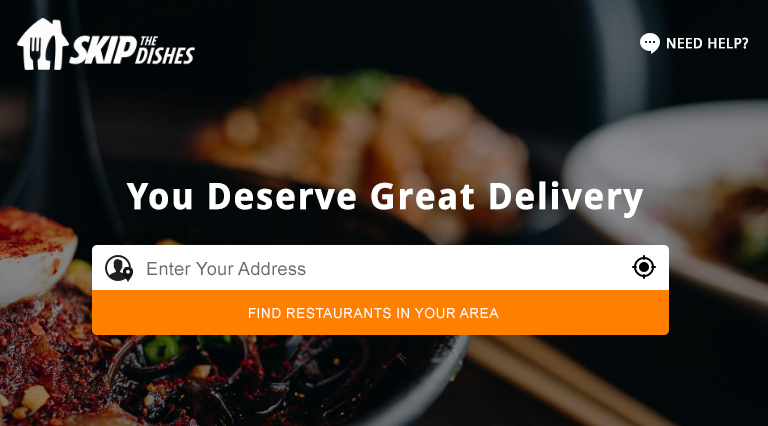
Skip The Dishes is one of the leading Canadian food delivery apps which is hugely popular. . According to a survey, it was the most popular application for food delivery in Canada in 2021. It is a part of Just Eat takeaway.com and serves customers in Canada. According to recent data, it has 30000 rest partners across Canada. It has more than 1 million downloads on the Google Play Store with an overall rating of 4.2, which is quite good.
One of the application’s features is the “Skip Rewards” that you can use for free deliveries. Another good thing about this application is that you can also order groceries in addition to alcohol and food.
3. Doordash

DoorDash does not need any introduction in Canada. Only on the Google Play Store has it received more than 3.17 million reviews and more than 10 million downloads since its inception. However, these have come from 4 countries: the USA, Canada, Japan, and Australia. However, there is no question about the fact that it is one of Canada’s most trustworthy food delivery applications. It covers about 7000 cities worldwide, including Canada, Australia, Japan, and the USA.
What is the application’s unique selling point? For the first month, you can get free delivery on food, groceries, or any other favorite items available on the app.
The app allows you to choose from various cuisines, including Asian, Caribbean, Italian, Mexican, and Indian. Once you’ve decided to eat, add it to your cart, place your order directly through the app, and track it online. It is available in most major Canadian cities, including Toronto, Montreal, and Vancouver. Users normally rate it better in terms of coverage and delivery time than other competitors like Uber Eats.
What is the application’s unique selling point? For the first month, you can get free delivery on food, groceries, or any other favorite items available on the app.
The app allows you to choose from various cuisines, including Asian, Caribbean, Italian, Mexican, and Indian. Once you’ve decided to eat, add it to your cart, place your order directly through the app, and track it online. It is available in most major Canadian cities, including Toronto, Montreal, and Vancouver. Users normally rate it better in terms of coverage and delivery time than other competitors like Uber Eats.
4. Fanataun

It is another popular food delivery app in Canada. It offers services with the tagline “Bites for A Better Price.” The USP of this application is that you can get the best Asian food through it.
Food lovers can look into several traditional Asian restaurants based in Canada and the USA using this app, which is a boon for millions of Asians living there. However, the coverage is limited.
As per the latest information, this application provides services for Vancouver, Toronto, London, Hamilton, New York, Waterloo, Montreal, Kingston, Seattle, Ervin, and Los Angeles.
Since this application concentrates only on Asian restaurants, the number of downloads and ratings is lower than other applications in the Apple store. There are around 3.5k ratings, and the overall review rating is 3.7 out of 5 on the Apple Store for Fantauan.
5. Dominos
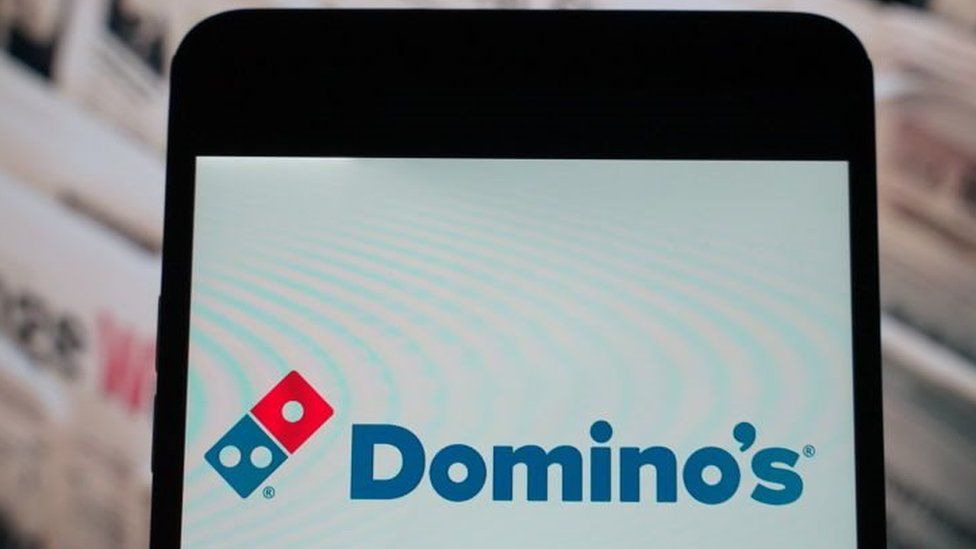
Domino’s is one of the leading apps for food delivery, with almost 40% of the market share in Canada. On the Google play store, it has received more than 1 million downloads, and on the Apple store, 395 k downloads. The current rating on the Google Play Store is 4.5, and 4.7 on the Apple App Store. However, unlike other primary food delivery services, it only delivers food from Domino’s outlets in Canada. So, in terms of food offerings, it is limited. But despite having this drawback, it is still immensely popular and a preferred app choice for many Canadians.
6. Grubhub
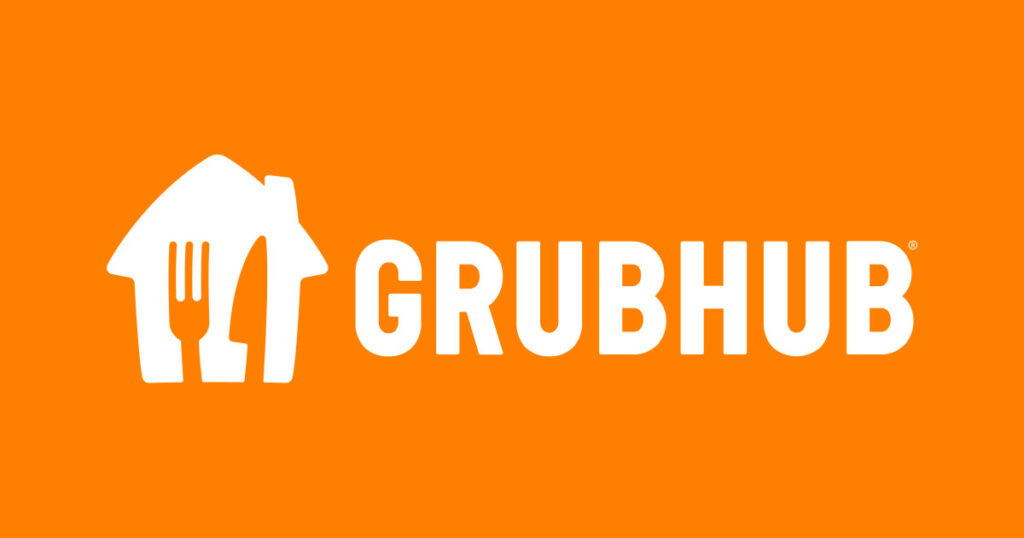
It is another food delivery app that should be on your radar if you are looking for delicious food. Although, in terms of coverage, this app is a little behind other apps in Canada. Only about 2000 restaurants are associated with it in Canada.
However, the application is famous worldwide, with 3.8 million ratings on the app store and 4.7 overall ratings. If you subscribe to a Grubhub premium membership, you can enjoy free delivery, and there are attractive food delivery membership plans in collaboration with Amazon Prime membership too.
7. Goodfood
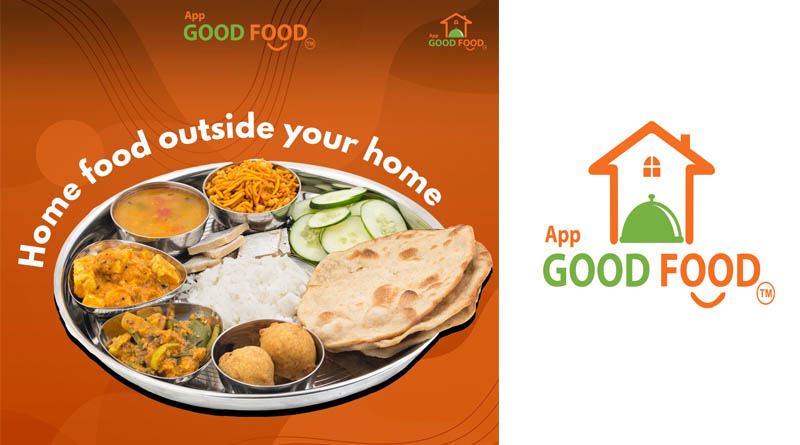
Goodfood is a meal-kit delivery service that will deliver fresh and healthy meals straight to your door. It says that it delivers farm-fresh ingredients and original recipes right to customers’ doorstep which is healthy but tasty at the same time.
It offers weekly meal kit plans with flexible options for customers in Canada. These include easy prep, Family-Style, Classic, low carb foods. Once you’ve decided what to eat via Goodfood, add it to your cart and place your order directly through the app. You can also track your order via the Good Food app while it’s being delivered. Key Features The app provides nutrition information and allergen information for each meal. You can also find out which dishes are vegan-friendly, vegetarian-friendly, or gluten-free-friendly. GoodFood is available in most major Canadian cities, including Toronto, Montreal, and Vancouver.
8. HelloFresh

HelloFresh is a meal-kit delivery service that will deliver fresh and healthy meals straight to your door, and it is immensely popular among all Canadian food delivery apps.
A meal kit delivery service such as HelloFresh makes it easy to receive and devour pre-portioned, easy-to-prepare lunches and dinners home-delivered. People don’t need to take the time out of planning, preparing, and shopping for ingredients, and it offers a convenient way to try new recipes.
Among many meal kit delivery services available in Canada, such as Chef’s Plate and Goodfood, HelloFresh is the most popular one. It covers almost all of Canada, including British Columbia, Newfoundland, Ontario, Quebec, Manitoba, Saskatchewan, Alberta, and the Maritimes.
With either two or four servings per meal, it offers boxes with three, four, or five meals per week. Customers can pick between eight types of meals: high-protein, family-friendly, vegetarian, and mostly meat. Generally, it applies a $9.99 shipping fee in addition to the food box cost.
The app has 10 million downloads on the Google Play Store with an overall rating of 3.8, slightly lower than others. It could be because it is more expensive than its competitors.
Conclusion
This blog post has covered the eight most popular Canadian food delivery apps, including the most popular meal kit delivery application. The food every application makes life very easy for people living in Canada. We know it is a large country, and many of the discussed applications do not serve the entire country, but you should be able to find an application that serves your area and the meal you want to relish. So go ahead and pick an app as per your preference and get the most out of them to taste delicious delicacies.





